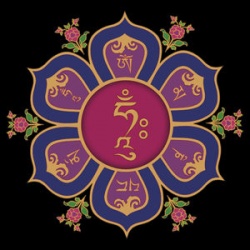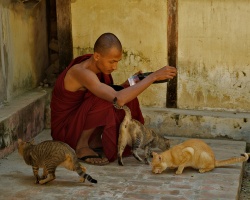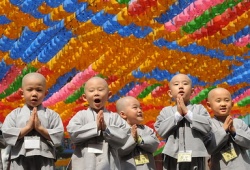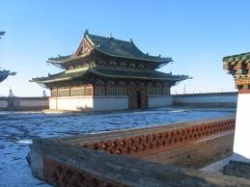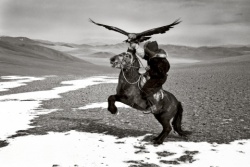Difference between revisions of "''Buddha and Peace'' by Ven. Dr. Bulgan"
| Line 1: | Line 1: | ||
[[File:2707.jpg|thumb|250px|]] | [[File:2707.jpg|thumb|250px|]] | ||
| + | |||
| + | |||
| + | |||
| + | |||
| + | |||
| + | |||
| + | |||
<poem> | <poem> | ||
“Whatever [[happiness]] in this [[world]] there is | “Whatever [[happiness]] in this [[world]] there is | ||
Latest revision as of 18:11, 1 April 2024
“Whatever happiness in this world there is
Arises from wishing for others,
Whatever suffering in this world there is
Arises from wishing for your own happiness.”
Concern about the issue of conflict, violence and the suffering and distress associated with them may have contributed to Siddartha Gotama's teachings that Buddha once described how mankind s tendency to resort to violence had worried him when he was still striving for enlightenment or “the supreme state of supreme state”….
- … Since desires are causes and motives of all fighting, are ideas of good and bad, inferior and superior, of all quarrels. Anyone who does not react to abuse and revile, is not vindictive, and gives up victory as well as defeat and enjoys happiness with serenity. One harms others thinking of one s own benefit, when others harm him in return, He harms them. This chain of action and reaction goes on. He who kills will get a victor over himself, and a reviler another such of himself. So the good man harms no being, live in peace, with sense- restraint. disciplined and in chastity. A man who has no anger, has sense restraint and who freed through right knowledge, leads to the right kind of life, will have a truly peaceful life.
The Buddha condemned those who quarreled, competed, argued, fought or harmed others, he respected those who never engaged themselves in these things, having understood others and made peace with them.
The Buddha s teaching of harmless (ahimsa) is positive. It is nothing but metta for all beings. Only he who is harmless and has metta will have no hatred for anyone.
As far as the non- violence principles in the Buddha s teachings, the basic attitudes of the Buddha towards to aspects of non- violence are clearly defined against any kind of violent deeds or karma produced by body, verbal and mental of human beings.
It observed that physical tortures, verbal abuses, as well as mental obscurations are forms of violence. Physical violence can not be accepted even as mean s of solving human and social problems. It is rejection of physical violence is based upon a strong conviction and reflection on the severity of the violent actions or bad karmas.
Throughout his life a Buddhist way- farer will never resort to killing, never touch any weapons, but will go about with loving kindness and consideration for the welfare of all living beings. The really strong are those who have always patient, refuse to retort in words and deeds, always forgive and protect the weak. In fact the best gift which can be given to anyone, is the assurance of non hatred, harmlessness and fearlessness.
Realizing that like oneself all beings seek happiness, one should not come in the way of others happiness for the sake of one s own happiness. All fear the stick and all are afraid of death, making example of oneself, one should neither kill nor cause killing.
All I tremble from violence
All I fear is death
Comparing one self with others
One should neither kill nor cause to kill
The above mentioned verses by Buddha, state that
1) All sentient beings fear any violent actions, and they became frightened when any form of violent, terrible sufferings fall on them.
2) Any living beings are feared of death,
3) all living beings appreciate just own lives,
4) When somebody faces with violence, one has to reflect that the one s situation similar of other”s because of the very fact that as human beings, we love own lives to be secured.
5) The motivation to avoid violence and to protect lives of others come from conviction that one s life is very sacred and precious one for every living beings in the universe.
The Buddha teaches as Self-analogy should be the criterion for one s dealing with others. Convinced that the doctrine of selflessness (nairatmya) is true, a large number of people may achieve sameness of oneself and others and cessation of others suffering may became dear to them, and they may accordingly. If they constitute a society, love (maitri), compassion (karuna) will prevail in it. Non- attachment (asanga), fearlessness (abhaya), and non – injury (ahimsa) will consequently be values realized by it. Such a harmonious society can have only harmonious relations with other such societies. In the made up the will be universal perpetual peace.
The truth of selflessness makes one realize that others are as much oneself as one is, and one must be as much concerned for others as for oneself. Indeed there is I and no others. I am I is as much true as I am as another . There is just universal suffering, and let all of it be put to an end.
In conformity of Buddhist tenets, everything is non – constant everything is in dependent origination no matter what it be happiness or suffering and dharmas (elements) have no real specific ‘ self ’. So, The perfection of man means the insight into the true nature of world and the reasoning of things and phenomena in the world not isolated or stiff conditions, but in their changes, in mutually transience of existing and non – existing. In effect, the Buddhist Philosophy maintains that man, having eliminated his ‘egoism’ or ‘self’ is to attain Nirvana or sublime peace.
2.On background of Mongolian Buddhism
The Historical Antecedents of Mongolian Buddhism
The landmass of Mongolia is impressive, totaling approximately 1,564,116 square kilometers; it is the second largest landlocked country in the world, another fact that has influenced its history in important ways (Central Intelligence Agency n.p.).
Early period of Buddhism in Mongolia: 3rd B.C. E to 13th century
According to historical sources of Mongolia, the Buddhism was introduced and spread throughout the history of successive Mongolian states starting as early as 3rd B.C.E. The earliest introduction of Buddhism was to the southwestern territories of Mongolian Hunnu (Xiongnu) state (3rd B.C.E-2nd B.C.E). In Hor chos 'byung (History of Buddhism in Mongolia) it is stated that “As it is prophesied by the Buddha in gLang ru’i mdo, Buddhism spread in Upper Hor country (present area of Qinghai, China) at the same time when Buddhism spread in Khotan after 100 years of the Buddha’s parinirvana. (4th century B.C.E)”. At that time 3 meter standing tall golden Buddha statue was the main object of sacrifice for inhabitants of southwestern Mongolian Hunnu state. Hor chos ‘byung informs that Buddhism was spread not only in southwestern part of Hunnu state but also in the present territory of Mongolia. The evidence of this is the Jowo Buddha temple in Bayanbalgad city, which was located in the northern bank of the present Selenge river in Mongolian Selenge aimag. At the time of Toba Wei state (386-581), the Buddhism was the state religion of Mongolia. A king of Joujan or Nirun state (402-555) proclaimed the Dharmapriya monk as a state teacher with the title of the purohita. In 572, the Toba King , a king of Tureg state of Mongolia (4th to 5th AD) had sent his state messenger to the Northern Qi state (550-577A.D) to bring Buddhist texts and scriptures such as Vimalakirtinirdeshasutra, Mahaparinirvanasutra and Sarvastivadavinaya.
Mongolian Empire: 13th –mid 14th century
During the Mongolian Empire, Buddhism was mainly practiced in the court of kings and later Buddhism was promoted as the state religion in Yuan Dynasty (1280-1368). Though some Tibetan and Mongolian historical sources inform that Chinggis Khaan (1162-1227) sent a letter to Tibetan Sakya Lama Sachen Gunga Nyingpo (1092-1158) and issued a decree on tax exemption for Tibetan Monasteries but that historical event is not commonly agreed. Whatever was the fact, the Chinggis Khaan and his successor kings were famous for their religious tolerance and support of Tibetan Buddhism. It is evidenced by Ugudei Khaan’s (1229-1241) decree to erect a magnificent stupa in Khar Khorum city, the capital city of Mongolia, and invitation from the Mongolian military general Godan, the son of Ugudei Khaan, to Tibetan Sakya Pandida Gunga Gyaltsan (1182-1251). Later Tibetan Karma Bakshi (1204-1283) was invited to the court of Munkh Khaan (1251-1258). The founder of Yuan Dynasty, Khubilai Khaan (1215-1294) promoted Tibetan Pagpa Lama Lodoi Gyaltsan to the post of state teacher in Shand city in 1264. From that time “patron and priest relation” between Mongolian kings and Tibetan lamas was established. The support of Buddhism by Mongolian great kings was due to Mongolian policy of effective and unified rule over their conquered countries, great tolerance for different religions and spiritual need of new religion replacing old age shaman belief and practice.
Third spread: 16th to early 20th century
After the collapse of Yuan Dynasty of Mongolia in 1368 the state support for Tibetan Buddhism declined. During the second half of the 16th century, with the support of Mongolian Khans, Buddhism was revived in Mongolia for the third time. Altan Khan of Tumed (1507-1589) played an important role for this revival. He invited Tibetan Lama, Sonam Gyatso (1542-1588) in Khukh khot city and bestowed on him the title of Vajradhara, the Dalai Lama. Abtai Sain Khan (1554-1588) met the Third Dalai Lama Sonam Gyatso in 1578 and later had established Erdene Zuu monastery in Mongolia between years of 1585-1586. Both Altan Khan and Abtai Sain Khan made Tibetan Buddhism as a state religion and prohibited the shamanism. Once again due to state support Buddhism flourished in Mongolia. Many Mongolian Buddhist scholars played a significant role in the further development of Buddhism in Mongolia such as Undur Gegeen Zanabazar (1635-1723), the First Jebtsundamba, the reincarnation of Tibetan famous historian Taranata (1575-1634), Zaya Pandid Luvsanprenlei (1642-1716), Zaya Pandid Namkhaijamts (1599-1662). By the time of early 17th century Buddhism was firmly established as a state religion in Mongolia. In 1640, the Law of Mongol-Oirad had declared Buddhism as a state religion. In the following centuries large Buddhist monasteries were established throughout Mongolia and number of monks constantly increased. In 1785, the number of monks in Mongolia was 70 thousand but in 1868 there were over 100 thousand monks only in Ikh Khuree city, at that time the capital city of Mongolia. During his visit to Mongolia in 1904, the Thirteenth Dalai Lama Thupten Gyatso acknowledged that Mongolia was the center of Tibetan Buddhist world.
The establishment of many new monasteries opened to a greater part of the population the opportunity to become monks, resulting in a drain on Mongolian manpower. The monasteries, however, became similar to those of early medieval Europe; they were the cradles of literature and science, particularly of Buddhist philosophy. By 1629 many other lamaist works were translated into Mongolian, including the 1,161 volumes of the lamaist canon, the Bka'-'gyur (Kanjur). Tibetan became the lingua franca of the clerics, as Latin was in medieval Europe, with hundreds of religious works written in this language.
Communist period: 1921-1990
In 1921, Mongolian national revolution took place and eventually Mongolia had declared the establishment of Mongolian Peoples’ Republic in 1924. From 1924, Mongolia became a satellite state of the Soviet Union and persecution of Buddhism started, in particularly the horrible year of 1937. During the persecution many high reincarnated lamas and scholar monks were sent to prison and executed. All monasteries, except two or three monasteries, were destroyed and closed. Sacred Buddha statues and books were destroyed and burned. By 1944 there was no single functioning monastery left in Mongolia. In 1944, the government re-opened Gandantegchenling Monastery with seven monks. In 1970, the Buddhist University was established at Gandantegchenling Monastery for Buddhist training of young monks from Mongolia and Buryat Republic of Soviet Union. Gandantegchenling Monastery was only one functioning monastery during the communist time. In the communist era many Mongolians practiced Buddhism secretly.
Democratic society: 1990-present
After the collapse of Soviet Union, a peaceful democratic revolution took place in Mongolia and Mongolians obtained the freedom of religion. By 1992, 92 new monasteries are newly opened in addition to Gandantegchenling Monastery, the only functioning monastery during the communist time. This number increased up to 143 as of 1997. As a result of increase of number of monasteries the number of monks is also increased. There were 2500 monks by 1998. In addition to training young monks at the Buddhist University, Gandantegchenling Monastery, the Center of Mongolian Buddhists have been sending number of monks to Buddhist institutions in India, particularly to Tibetan Buddhist institutions. Currently around 200 monks have been studying in Tibetan Buddhist institutions. As Mongolian Buddhism was much suffered during communist era and Mongolians nearly lost their Buddhist tradition, culture and practice for 70 years, there is large task for Mongolian Buddhists to revive Buddhism in Mongolia under many challenges such as financial restraint, lack of highly qualified Buddhist teachers and rapid growth of Christianity in Mongolia.
Source
Author: Ven. Dr.T Bulgan. ABCP Secretary General, Mongolia
buddhismandaustralia.com

